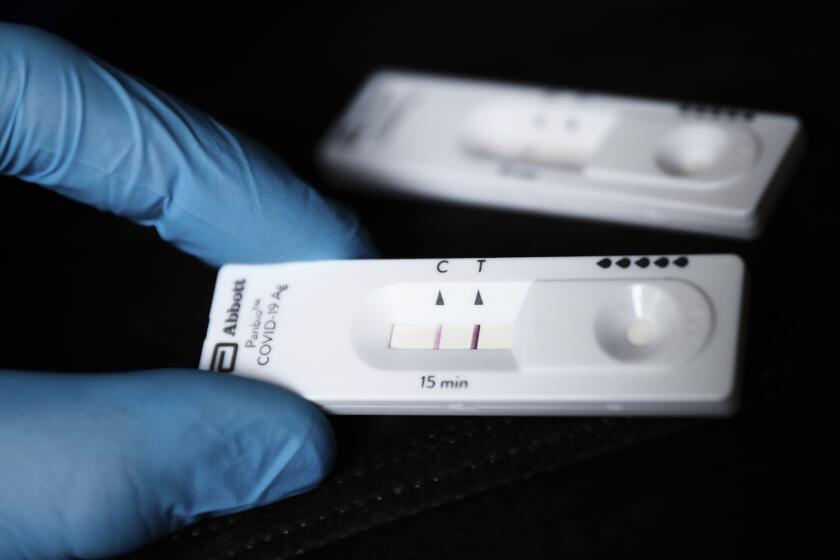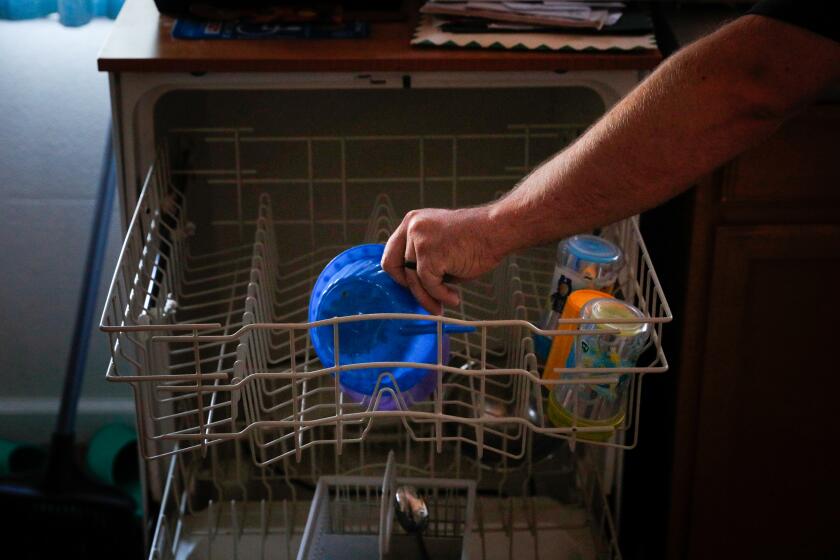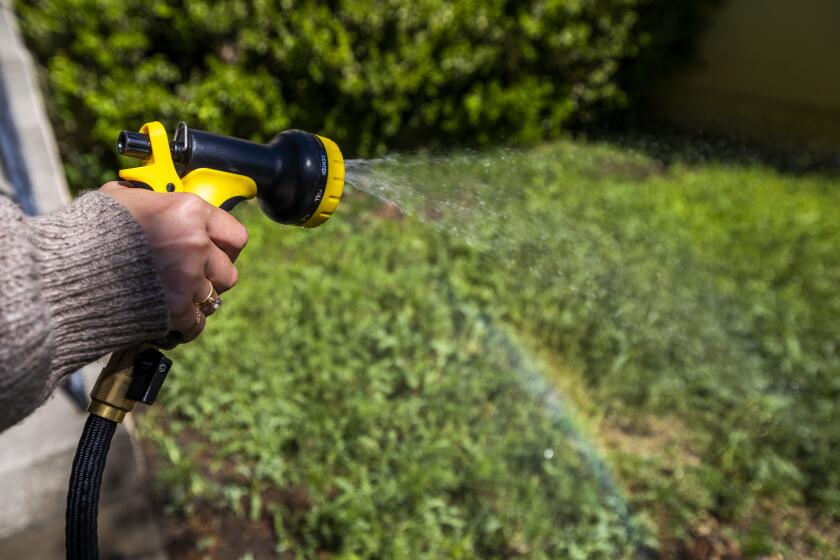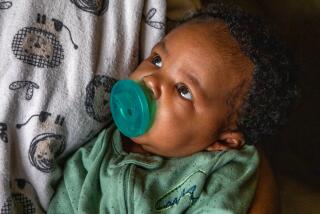Should babies sleep in car seats? Experts explain the risks (and offer safety tips)
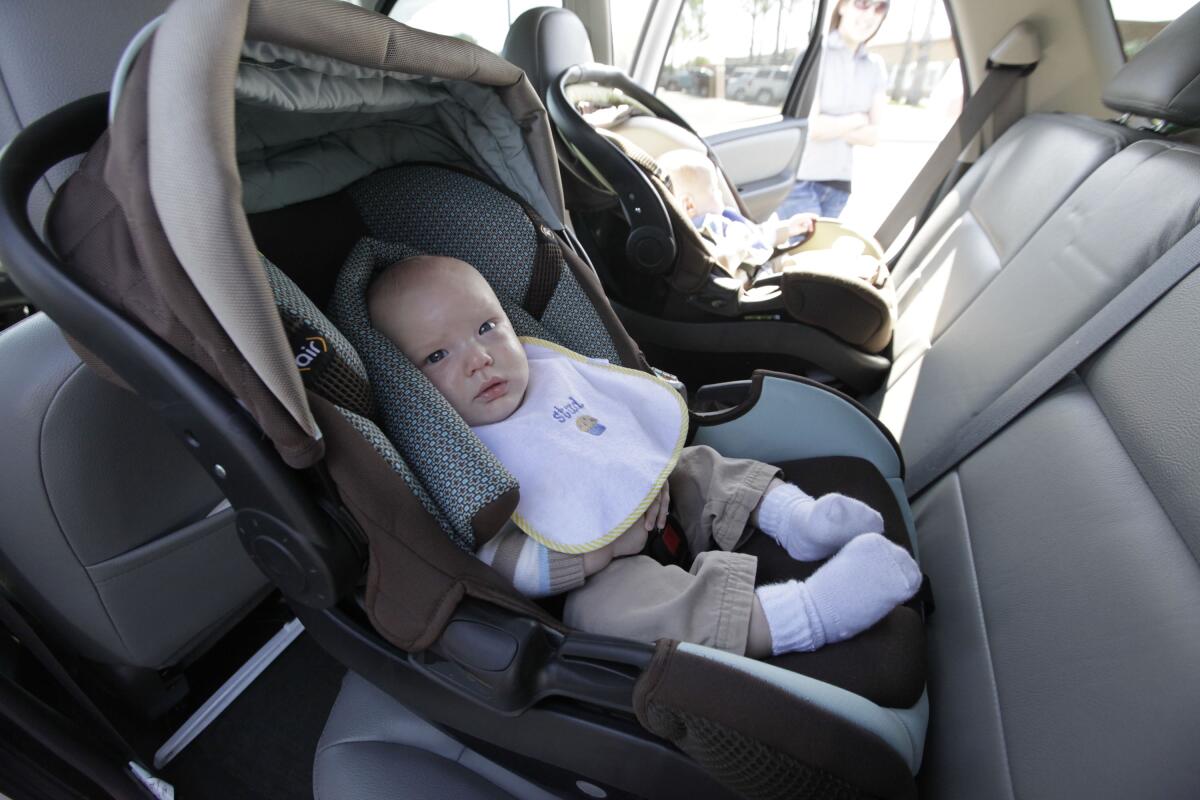
- Share via
You’ve just pulled up to your home after a Saturday of running errands when you notice your baby is fast asleep in the car seat. Your only goal becomes keeping that baby napping.
But should you remove the car seat, bring it in the house and allow your baby to continue sleeping in it?
For children under 2, no, says Helen Arbogast, injury prevention manager at Children’s Hospital Los Angeles.
“And I know it’s hard if you finally got your baby to sleep ... but the reality is you want to put them in a safe sleeping environment, and car seats are not designed for children to sleep safely in for extended periods of time,” she said.
Infant car seat safety is at the top of parents’ minds with the recent passage of the Safe Sleep for Babies Act. The bill, which became law this month and was sponsored by Rep. Tony Cardenas (D-Panorama City), bans crib bumpers and incline sleepers for infants. The latter are designed for an infant up to 1 year old and have an incline surface of greater than 10 degrees. But experts say that degree of incline can be dangerous if a child’s head slumps and blocks her airway.
So as you evaluate the safety of your car seats or use one for the first time, here’s what you need to know.
The Biden administration announced Tuesday that each U.S. household can order eight free at-home test kits, on top of the eight previously made available.
Why shouldn’t a baby sleep in a car seat?
Car seats are designed solely for transportation, Arbogast said. She understands that when you have a crying baby, you might be feeling desperate and want to soothe them with a car ride.
That’s OK if it’s a short ride.
Infants rely on adults for their positional needs — unlike adults and young children who can shift their weight or move a leg when they’re uncomfortable during a long car ride — especially with their heads and necks.
“Babies have very large heads and very small and weak necks, so their heads can very easily flop forward obstructing their own breathing because they’re just not strong enough yet,” said Emily Thomas, manager of auto safety for Consumer Reports’ Auto Test Center.
Arbogast said the general rule is that children should not be in the car seat, for any reason, longer than two hours.
“So if you’re on a road trip — or like us that live in L.A. and something that’s 13 miles will take an hour and half — you’re going to need to pull over and let your child get out,” Arbogast said.
Over time, she said, parents will find a way to gently ease their child out of the car seat and allow her to keep sleeping.
Pro tip: If possible, instead of going for a soothing car ride, Arbogast suggests fastening the baby in a stroller and pushing it around the house or in the neighborhood.
Are you using your dishwasher correctly? Are you using it at all? Everything you wanted to know about washing dishes efficiently during a drought.
What is a safe sleeping environment?
Arbogast said babies need firm, flat, bare surfaces. If families don’t have a crib or dedicated space that’s locked off, even putting a thin blanket on the ground (a firm, bare surface) is OK.
“We tend to think small children need lots of cushy stuff, and it’s the opposite: They need a bare environment,” she said.
The American Academy of Pediatrics recommends keeping your baby’s sleep space free of blankets, pillows, bumpers, toys and other objects.
Car seat safety
Pediatricians recommend that all infants and toddlers should ride in a rear-facing car seat, Thomas said. In fact, California law requires that children under 2 need to be in a rear-facing car seat unless they weigh more than 40 pounds or are 40 inches tall.
It’s important to ensure that the seat is installed at the proper reclining angle. Thomas said all seats have an indicator: It might be a level line or a level bubble on the carrier itself or on the carrier base. Follow the manufacturer instructions.
The reason that recline angle is important, she said, is because a semi-reclined angle helps keep the child’s airway open.
Also, a child needs to be properly harnessed and buckled into their seat. Whether it’s a car seat only or a car seat and stroller set, your child needs to be strapped in at all times. That includes having the crotch buckle buckled, the chest clip closed and the harness straps snug, Thomas said.
You want to minimize the squirming and wiggling that babies do.
Caroline Armstrong, lactation and maternity education supervisor for UCLA Health, offered some do’s and don’ts of restraint safety:
- Do ensure that the harness strap is below the shoulders and adjusted to the child’s height.
- Do ensure that the chest clip is at armpit level and the straps fit snugly.
- Don’t allow harnesses to become loose, uneven or twisted.
- Don’t let the car seat move more than 1 inch side to side.
L.A. Times readers share how they are conserving water in California amid drought restrictions.
Answers to common car seat questions
Does a car seat have an expiration date? Yes. Arbogast said six years is the standard rule for when car seats expire. Check your product for its expiration date.
Are secondhand car seats OK to use? It depends. Arbogast said that as families juggle their expenses and the rising costs of groceries, gas and more, they might be handed down a car seat from a friend, neighbor or relative. That’s OK as long as you ask about the car seat’s history. “If a car seat has been in a big crash, it’s done its job just like an airbag and you can’t use it again,” she said.
How do I know I’m getting the right car seat for my infant? The National Highway Traffic Safety Administration has information on car seat types and how to find the right seat for your child and car. It also has a tool to assist in your research of car seats and brands.
How do I know I’ve properly installed my car seat? Car seat technicians can double check your installation, help you install and answer questions.
- NHTSA has a car seat certified technician finder. Enter your city, state or ZIP Code and it will show you a list.
- Children’s Hospital Los Angeles offers a two-hour, in-person or virtual class on car seat installation or in-person or virtual inspections. Call (323) 203-7688 or email [email protected] (for English), [email protected] and [email protected] (for Spanish and English), [email protected] (for Vietnamese and English).
- The California Department of Public Health shares car seat basics and resources for installation.
How can I learn about recalls? When you purchase your car seat, register the seat with the manufacturer to receive calls and safety notices about the product. You can do that by filling out the form that comes with the product or going to the manufacturer website.
- You can also register your product with NHTSA. Visit the agency’s website for more information.
- SafetyBeltSafe U.S.A. is a nonprofit organization that supports families and professionals with car seat safety, including recall questions. Call its English and Spanish hotline (800) 745-7233 (English) or 800-747-7266 (Spanish)
About The Times Utility Journalism Team
This article is from The Times’ Utility Journalism Team. Our mission is to be essential to the lives of Southern Californians by publishing information that solves problems, answers questions and helps with decision making. We serve audiences in and around Los Angeles — including current Times subscribers and diverse communities that haven’t historically had their needs met by our coverage.
How can we be useful to you and your community? Email utility (at) latimes.com or one of our journalists: Jon Healey, Ada Tseng, Jessica Roy and Karen Garcia.
More to Read
Sign up for Essential California
The most important California stories and recommendations in your inbox every morning.
You may occasionally receive promotional content from the Los Angeles Times.
